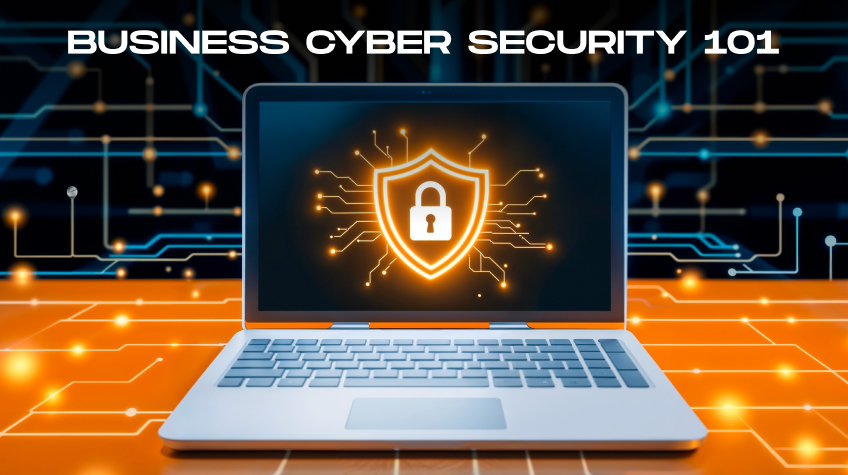
As various new threats appear much more frequently in the modern world, cybersecurity is now just as fundamental to technological security as any science. As computer networks become more and more susceptible to evil intentions, it becomes crucial to have a good number of well-trained people to fight these events. Small and big companies have become targets of ransomware and data leak attacks.
The only cybersecurity practice helps you prevent cyberattacks toward your business or organization. In this Cybersecurity 101 article, learn how you can secure your organization and business from evolving cyber threats. By implementing these cyber tips, you can build a reliable defense against malicious attacks and stay one step ahead of future cyber threats.
What is Cyber Security?
Cybersecurity is the science of protecting systems, and computers from external threats or intrusion. In the current world where data is the new oil, basic knowledge of cybersecurity is essential to ensuring you do not fall prey to malicious individuals or organizations.
Key Concepts in Cyber Security
➢ CIA Triad (confidentiality, integrity, and availability)
- Confidentiality: Making sure critical data is not easily shared with the wrong groups or can only be accessed by the right persons.
- Integrity: The material aspects of working with the like of information, protection, accuracy, and completeness.
- Availability: We have systems and data when they are needed.
➢ Cyber Threats
- Malware: Viruses that are programmed with the aim of damaging computers and other digital-based systems.
- Phishing: Alluding people into revealing some information that is deemed to be ‘stake’.
- Ransomware: A technique of receiving protection money through intimidation of releasing obtained information or through the threat of releasing gathered information.
- Denial-of-Service (DoS) Attacks: A desperate attempt to lock out the rightful owners of the systems.
7 Tips to Secure Your Organization from Cyber Threats
Here’s the step-by-step information for creating a comprehensive security strategy:
1. Risk Assessment
Cyber security risk might be defined as an appraisal of possible dangers to an organization’s computer networks and associated systems, which helps in evaluating and responding to possible threats. It is a structured process to define and rank risks, to deploy available resources to minimize threats to systems, information and processes.
➢ What it Includes:
- Identify Assets: Find out what needs protection, the hardware, software, data and the networks that serve as a channel.
- Threat Analysis: Assess threats such as viruses, spam and other related forms of threats like malware, phishing and ransomware.
- Vulnerability Assessment: Find out areas of your systems and applications that have a vulnerability.
- Risk Prioritization: This means, ranking risks according to the level of risk that they pose and the chance or the probability that they are likely to happen.
2. Policy and Procedures
Regulations in Cyber security are the foundational elements of any protective strategy of an organization, offering the framework in which an organization can protect its information resources. Regulations describe organizational policies, protocols and guidelines concerning cybersecurity including access rights, data handling, the management of incidents and other utilization.
➢ What it Includes:
- Develop Policies: It is necessary to develop an unquestionable policy that envisages data protection, access control, incident management, and many more.
- Enforce Strong Passwords: Follow up password policies that declare the password complexity and the frequency of the change.
- Implement Multi-Factor Authentication (MFA): Implement more than single-factor authentication, a means to log in.
- Conduct Regular Security Awareness Training: It is crucial to teach people at work about typical hazards and how to avoid them.
3. Network Security
Network security is a core segment of cybersecurity dedicated to safeguarding an organization’s network from malicious use, interference or access. It involves putting in place policies, technology and processes to protect data as it moves across a communication network to achieve the security triple Ama.
➢ What it Includes:
- Prevent Unauthorized Access: Limit all access to the company network to only permitted clients and other devices.
- Protect Data Integrity: In some cases or in instances where someone interacts with the specific data that is being transmitted it should not be changed or tampered with.
- Ensure Availability: Ensure continuity of use of network resources by clients and delivery of services.
- Safeguard Confidentiality: Prevent the leakage of information that is confidential.
4. Endpoint Security
Endpoint protection is defined as the processes to safeguard the point of connection or the entry points of PCs, laptops, smartphones, tablets, servers and IoT devices from threats. Endpoint protection is a fundamental element of a comprehensive security framework as the amount of interconnected gadgets increases and the level of remote employees’ engagement rises.
➢ What it Includes:
- Antivirus and Anti-Malware: Malware must be kept out of the devices to prevent it from effectively freezing the devices.
- Endpoint Detection and Response (EDR): Scanning server endpoints for threats and acting on the same swiftly.
- Secure Configuration: Discuss the proper settings for the security of different devices.
5. Data Protection
Data protection refers to the processes, policies and technologies designed to safeguard sensitive data from unauthorized access, corruption, or loss. It ensures that data is kept safe, allowing only the right people to access data, and it meets the laws of GDPR, HIPAA, and CCPA.
➢ What it Includes:
- Data Encryption: Secure all data by encrypting the data both in storage and in transfer.
- Data Loss Prevention (DLP): Avoid the transfer of data to unauthorized personnel and NTT.
- Regular Backups: Make copies of files frequently and always check restoration.
6. Incident Response Plan
An Incident Response Plan (IRP) refers to a documented tactical plan that outlines the ways of identifying, reporting, analyzing, containing, eradicating and minimizing the impacts of cyber security incidences including data loss, ransomware attack or system compromise. Cybersecurity is an imperative component of an organization’s security management that allows for quick mitigation of risks to reduce impact, minimize downtime, and restore business operations.
➢ What it Includes:
- Rapid Detection and Containment: Prevent the attraction of the incident from escalating before you contain it.
- Mitigation of Damage: Optimize monetary, business, and branding loss.
- Efficient Recovery: Minimize disruptions of system time after organization operations are impacted negatively.
- Regulatory Compliance: Compliance with legal and industry-standard reporting standards.
- Continuous Improvement: To some extent, the incidents should be learned from the existing defense mechanisms and for updating IRP.
7. Continuous Monitoring and Improvement
Keeping up with the threats and responding to them is fundamental to any organization’s proactive cybersecurity that seeks to address the challenges in real time. This one entails the constant evaluation of systems, networks, and processes to establish the risks and rate the efficiency of security systems. It also underlines further development of cybersecurity strategies and tools approaches to consider trends in risks.
➢ What it Includes:
- Network Monitoring: Identify conditions on the network.
- Log Analysis: Check records of system activities for any sign of illegitimacy.
- Security Audits: The best practice is to conduct security audits at least once a year to see possible and real threats that might occur.
- Stay Informed: Maintain the current threats and vulnerabilities of your organization.
Common Cyber Security Measures
- Strong Passwords: Use a combination of the alphabet in upper and lower case, numbers, and symbols to create complex passwords.
- Updates on Software: Ensure updates of your operating system and software to ensure installation of newer security patches
- Firewall: A security system that monitors network traffic and blocks unauthorized access
- Antivirus Software: Protects against viruses, malware, and other cyber threats
- Backup: Regularly backing up important data will prevent data loss.
- Two-factor authentication (2FA): Adds another layer of protection through verification.
- Encryption: Ensures that sensitive data is protected by transforming it into a format that people cannot read.
- User Awareness and Training: Educating the users to understand their cybersecurity best practices.
Conclusion
In conclusion, an effective cybersecurity plan to prevent intrusions, ensure the stability of business operations and preserve confidential data from new and more complex cyber threats. It offers a coherent set of guidelines for evaluating threats, putting preventive and detective controls into action, reacting to breaches and enhancing safeguards.
Each step in the guide, from learning about the threats and risks, the assessment, the protection plan and the creation of a firm incident response, as well as the monitoring and feedback process all build up to a comprehensive security plan.






